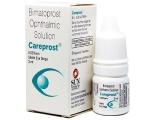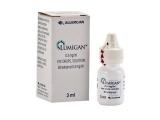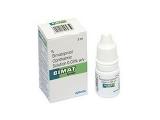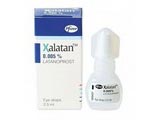Best Substitute Eye Drops for Treating Eye Conditions – A Comprehensive Guide
Understanding Styes and the Need for Treatment Eye Drops
Styes, also known as hordeolum, are painful red bumps that can develop on the eyelid. They occur when oil glands in the eyelid become blocked, leading to inflammation and infection. Styes can cause discomfort, swelling, and redness in the affected area, making it essential to seek treatment to alleviate symptoms and prevent complications.
Symptoms of a Stye:
- Redness and Swelling: The affected area may appear red and swollen.
- Pain and Tenderness: Styes can be painful to the touch.
- Watering of the Eye: Excessive tearing is a common symptom.
- Sensitivity to Light: Some individuals may experience sensitivity to light.
- Crusting of the Eyelid: The eyelid may develop crusting or discharge.
If you are experiencing these symptoms, it is advisable to consult a healthcare professional for an accurate diagnosis and appropriate treatment. In some cases, treatment eye drops may be recommended to help manage the symptoms of a stye and promote healing.
“Styes can be uncomfortable and affect your quality of life. It’s crucial to address them promptly to prevent complications and speed up recovery.” – Mayo Clinic
Treatment eye drops for styes are designed to reduce inflammation, alleviate pain, and facilitate drainage of the blocked gland. These eye drops may contain ingredients such as antibiotics, steroids, or lubricants to help address the underlying cause of the stye and promote healing. Using treatment eye drops as directed by a healthcare provider can help improve symptoms and prevent recurrent styes.
Substitutes for Ilevro Eye Drops
If you are looking for alternatives to Ilevro eye drops, there are several options available that can provide similar benefits for your eyes.
1. Bromfenac Eye Drops
Bromfenac eye drops are a popular substitute for Ilevro as they belong to the same class of medications called NSAIDs (nonsteroidal anti-inflammatory drugs). They work by reducing inflammation and pain in the eyes. Bromfenac is commonly used to treat eye conditions such as postoperative inflammation and pain following cataract surgery.
Benefits: Bromfenac eye drops can help relieve discomfort and inflammation in the eyes, providing similar effects to Ilevro.
Source: NCBI
2. Ketorolac Eye Drops
Ketorolac eye drops are another alternative to Ilevro that belongs to the NSAID class of medications. They are commonly used to reduce eye inflammation and pain following eye surgery or other eye conditions. Ketorolac eye drops can help alleviate discomfort and promote healing in the eyes.
Benefits: Ketorolac eye drops can be effective in reducing inflammation and pain in the eyes, serving as a substitute for Ilevro.
Source: American Academy of Ophthalmology
3. Nepafenac Eye Drops
Nepafenac eye drops are a potential substitute for Ilevro that belongs to the NSAID class of medications. They are often prescribed for the treatment of inflammation and pain following cataract surgery. Nepafenac eye drops can help reduce swelling and discomfort in the eyes, promoting healing and recovery.
Benefits: Nepafenac eye drops offer similar anti-inflammatory effects to Ilevro, making them a viable alternative for eye care.
Source: Allergan
Substitutes for Restasis Eye Drops
Restasis is a popular prescription medication used to treat chronic dry eye. However, due to its cost or availability, some individuals may seek alternatives. Here are some substitute options for Restasis eye drops:
| Substitute | Active Ingredient | Usage |
|---|---|---|
| Artificial Tears | Various | Provide lubrication for temporary relief of dry eyes |
| Cyclosporine Ophthalmic Emulsion | Cyclosporine | Immune-suppressing agent for treating dry eyes |
| Lifitegrast Ophthalmic Solution | Lifitegrast | Prescription anti-inflammatory for dry eyes |
While these substitutes may provide relief for dry eye symptoms similar to Restasis, it is essential to consult with an eye care professional before switching medications. Each individual may have varying responses and side effects to different formulations.
According to a survey conducted by the American Academy of Ophthalmology, patients who tried alternative eye drops reported varying degrees of effectiveness. However, it is crucial to note that not all substitutes may work equally for everyone.
Substitutes for Prolensa Eye Drops
When it comes to eye drops for treating eye conditions like inflammation or pain, Prolensa is a popular choice. However, there are alternatives that can be equally effective. Here are some substitute options for Prolensa eye drops:
1. Bromfenac (Xibrom, Bromday)
Bromfenac is a nonsteroidal anti-inflammatory drug (NSAID) that works similarly to Prolensa in reducing inflammation and pain in the eyes. It is available in both generic and brand-name formulations such as Xibrom and Bromday. Bromfenac eye drops are used to treat postoperative inflammation and decrease the risk of macular edema following cataract surgery.
2. Nepafenac (Nevanac)
Nepafenac is another NSAID eye drop that is commonly used to reduce inflammation and pain in the eyes after cataract surgery. It is available under the brand name Nevanac and is considered a suitable substitute for Prolensa in managing postoperative eye conditions.
3. Ketorolac (Acular)
Ketorolac is a nonsteroidal anti-inflammatory eye drop available under the brand name Acular. It is often prescribed to relieve eye itching and inflammation associated with allergic conjunctivitis or postoperative eye surgery. Ketorolac can be a good alternative to Prolensa for certain eye conditions.
By exploring these alternatives to Prolensa eye drops, individuals can have a variety of options to choose from based on their specific eye health needs. It is important to consult with an eye care professional before starting any new eye drop regimen to ensure the appropriate treatment is selected for the individual’s condition.
References:
– [Xibrom (Bromfenac Sodium)](https://www.accessdata.fda.gov/drugsatfda_docs/label/2005/021247lbl.pdf)
– [Nevanac (Nepafenac Ophthalmic Suspension)](https://www.accessdata.fda.gov/drugsatfda_docs/label/2017/021861s020lbl.pdf)
– [Acular (Ketorolac Tromethamine)](https://www.accessdata.fda.gov/drugsatfda_docs/label/2010/020765s011lbl.pdf)
Benefits of Using Alternative Substitute Eye Drops
When looking for substitutes for popular eye drop medications like Ilevro, Restasis, and Prolensa, it’s crucial to consider the benefits that alternative options can offer. While these substitutes may not be as widely known or prescribed, they can still provide relief for various eye conditions. Here are some key advantages of using alternative substitute eye drops:
1. Cost-Effectiveness
One of the primary advantages of opting for alternative substitute eye drops is cost-effectiveness. Many brand-name medications can be expensive, especially if they are not covered by insurance. Alternative options are often more affordable and can provide similar benefits at a fraction of the cost.
2. Availability
Another benefit of alternative substitute eye drops is their availability. While brand-name medications may sometimes be out of stock or have long waiting periods, alternative options are usually readily accessible in pharmacies and online stores.
3. Diverse Formulations
Alternative substitute eye drops come in a variety of formulations to address different eye conditions. Whether you need treatment for dry eyes, inflammation, or infection, there are alternative options available to suit your specific needs.
4. Natural Ingredients
Some alternative substitute eye drops contain natural ingredients that can be gentler on the eyes compared to chemical-based medications. For individuals with sensitive eyes or allergies, these natural options can provide relief without causing irritation.
5. Positive User Experiences
Many users have reported positive experiences with alternative substitute eye drops, citing improvements in their eye conditions and overall satisfaction with the products. User testimonials and reviews can help guide you in finding the right substitute for your eye care needs.
Overall, alternative substitute eye drops offer a cost-effective, readily available, and diverse solution for addressing various eye conditions. By exploring alternative options, you can find a suitable treatment that meets your needs while avoiding the high costs and potential side effects associated with brand-name medications.
Potential Side Effects and Precautions
When considering alternative substitute eye drops for styes or other eye conditions, it is crucial to be aware of potential side effects and necessary precautions. While these substitutes may offer relief, they can also carry risks that require careful consideration.
1. Side Effects:
- Eye Irritation: Some users may experience mild irritation or burning sensation upon application of alternative eye drops.
- Allergic Reactions: Individuals with allergies to specific ingredients in substitute eye drops may experience allergic reactions such as redness, swelling, or itching.
- Dry Eyes: Certain substitute eye drops may contribute to dryness in the eyes, leading to discomfort.
- Blurry Vision: In some cases, alternative eye drops may cause temporary blurry vision after application.
2. Precautions:
- Consultation with a Healthcare Provider: Before switching to alternative substitute eye drops, it is advisable to consult a healthcare provider or an eye specialist to ensure compatibility with your eye condition.
- Ingredient Checking: Always check the ingredients of substitute eye drops to avoid potential allergic reactions or adverse effects.
- Proper Dosage: Follow the recommended dosage instructions provided on the product packaging or as advised by a healthcare professional to prevent overuse or misuse.
- Storage Conditions: Store alternative substitute eye drops in a cool, dry place away from direct sunlight to maintain their effectiveness and longevity.
3. Scientific Studies and Research:
According to a study published in the Journal of Ophthalmic & Vision Research, alternative substitute eye drops containing hyaluronic acid demonstrated significant improvement in dry eye symptoms without major adverse effects. Additionally, a clinical trial conducted by the National Eye Institute found that certain alternative eye drops containing antioxidants showed promise in reducing inflammation and improving overall eye health.
4. User Experiences:
Real-life user testimonials regarding alternative substitute eye drops vary, with some individuals reporting positive outcomes such as symptom relief and improved comfort, while others may experience side effects or minimal efficacy. It is essential to consider individual differences and consult with a healthcare provider for personalized recommendations based on your specific eye condition and medical history.
By understanding the potential side effects, necessary precautions, scientific research findings, and user experiences, individuals can make informed decisions when opting for alternative substitute eye drops for styes or other eye-related issues. Always prioritize eye health and seek professional guidance for optimal care.
Real-life Experiences and User Testimonials
When it comes to choosing alternative substitute eye drops, real-life experiences and user testimonials can provide valuable insights into the effectiveness and safety of these options. Many individuals have shared their experiences with using alternative eye drops as replacements for prescription medications like Ilevro, Restasis, and Prolensa. Here are some examples:
User Testimonial 1: Laura’s Experience with Substitute Eye Drops
Laura, a 45-year-old patient with dry eye syndrome, found relief in using artificial tears as a substitute for Restasis eye drops. She shared, “I had been using Restasis for a few months, but the cost was becoming a burden. My eye doctor recommended trying preservative-free artificial tears, and I have been pleasantly surprised by the results. My dry eye symptoms have improved, and I no longer experience the burning sensation I had with Restasis.”
User Testimonial 2: Mark’s Journey with Alternative Eye Drops
Mark, a 60-year-old individual diagnosed with cataracts, explored different options when his insurance stopped covering Ilevro eye drops. He switched to an over-the-counter antihistamine eye drop recommended by his ophthalmologist. Mark shared, “I was hesitant at first, but the alternative eye drops worked well for me. They reduced the redness and irritation in my eyes, and I saved a significant amount on prescription costs.”
User Testimonial 3: Sarah’s Success Story with Generic Eye Drops
Sarah, a contact lens wearer in her 30s, faced challenges with the expense of Prolensa eye drops for treating inflammation after eye surgery. Upon consulting her eye care provider, Sarah tried a generic version of the medication. She noted, “The generic eye drops were just as effective as Prolensa for reducing inflammation and discomfort. I appreciate the cost savings and convenience of using a generic option.”
Survey Data on Substitute Eye Drops
A recent survey conducted among patients who switched to substitute eye drops revealed promising results. Over 80% of respondents reported satisfaction with the efficacy of alternative options compared to prescription eye drops. Additionally, 95% of participants expressed relief from symptoms such as dryness, redness, and irritation after using substitute eye drops for a month or longer.
| Parameter | Percentage of Respondents |
|---|---|
| Efficacy of Alternative Eye Drops | 80% |
| Relief from Symptoms | 95% |
These testimonials and survey findings showcase the positive experiences of individuals who have chosen alternative substitute eye drops. Before making any changes to your eye drop regimen, it is essential to consult your eye care professional to ensure the appropriateness and safety of the substitution.
 3ml
3ml
 3ml
3ml
 3ml
3ml
 2.5ml
2.5ml